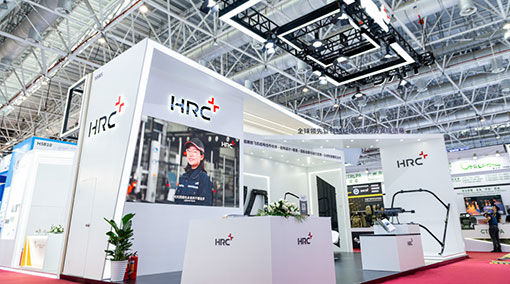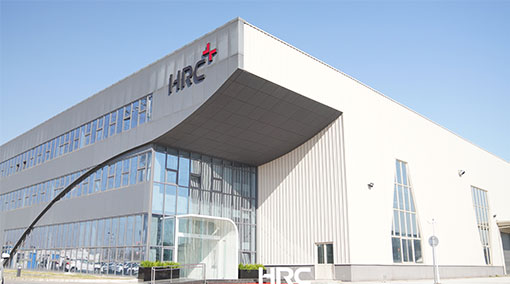Fifth Consecutive CIIE Participation: HRC Advances Toward a Greener Future with Cutting-Edge Composite Innovations
From November 5th to 10th, the 7th China International Import Expo (CIIE) was held with unprecedented grandeur at the National Exhibition and Convention Center in Shanghai. Featuring over 400 groundbreaking new products, technologies, and services, this year's expo not only highlighted global innovation trends but also injected fresh momentum into China's consumption, technology, and industrial upgrading. As a five-time CIIE participant and the sole integrated carbon fiber composite solution provider at the event, HRC focused on future 3D mobility, debuting a series of pioneering products for ground transportation and low-altitude aviation in Automotive Zone, Hall 2.1. Centered on the theme "Advanced Composites Building a Sustainable Future", HRC seamlessly integrated material science, eco-conscious design, and aesthetic appeal to outline an innovative blueprint for smart mobility and low-carbon living.
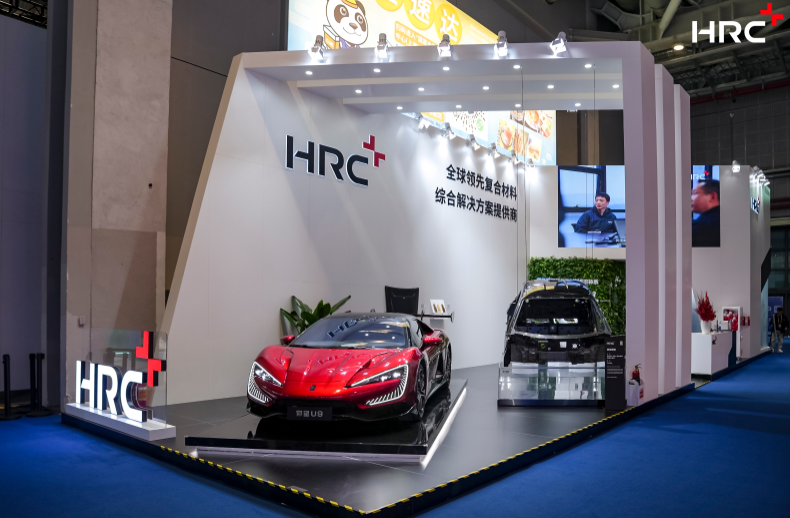
Tier-1 Carbon Fiber Partner of Components and Airframe Structures Empowers Lightweight Air Mobility
"Low-altitude economy" is no doubt the biggest highlight of this year's CIIE. As a Tier-1 partner for carbon fiber components and airframe structures, HRC made waves in 2021 with the debut of XPeng AeroHT's visionary "Traveler X2” flying car. This year, HRC returned with two global premieres: a lightweight quadcopter industrial UAV and the ES1000 electric ultra-short takeoff and landing (USTOL) unmanned transport aircraft (full carbon fiber model), showcasing its deep expertise and robust capabilities in the low-altitude sector.
To meet the core demands of power inspection drones for low energy consumption, high endurance, and high load capacity, HRC designed and developed the carbon fiber airframe structure for this lightweight quadcopter industrial UAV. The integrated structure of the arms, fuselage, and landing gear was manufactured with internal inflatable bladders and external metal molds, significantly improving material utilization and structural efficiency while achieving lightweight and cost-effective production. This product is now in mass production and is expected to drive automation and intelligence in the power inspection industry.
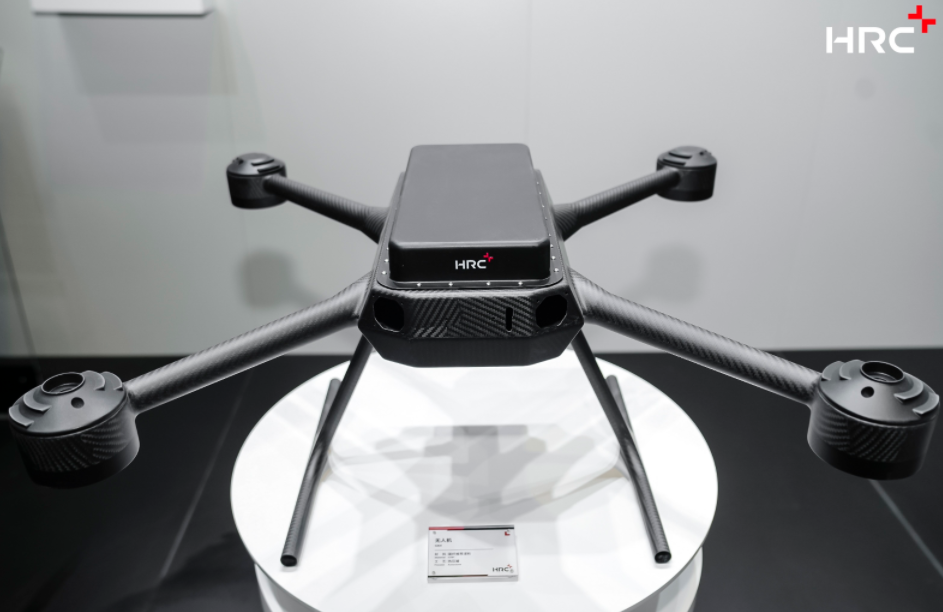
The ES1000 electric USTOL unmanned transport aircraft is a breakthrough in electric aviation technology, independently developed and designed by low-altitude innovator Yifei Aerospace Technology. With a maximum takeoff weight of 4,500 kg, a range of 1,200 km, and a takeoff/landing distance of just 100 meters, the ES1000 offers highly efficient transport capabilities and broad application prospects.
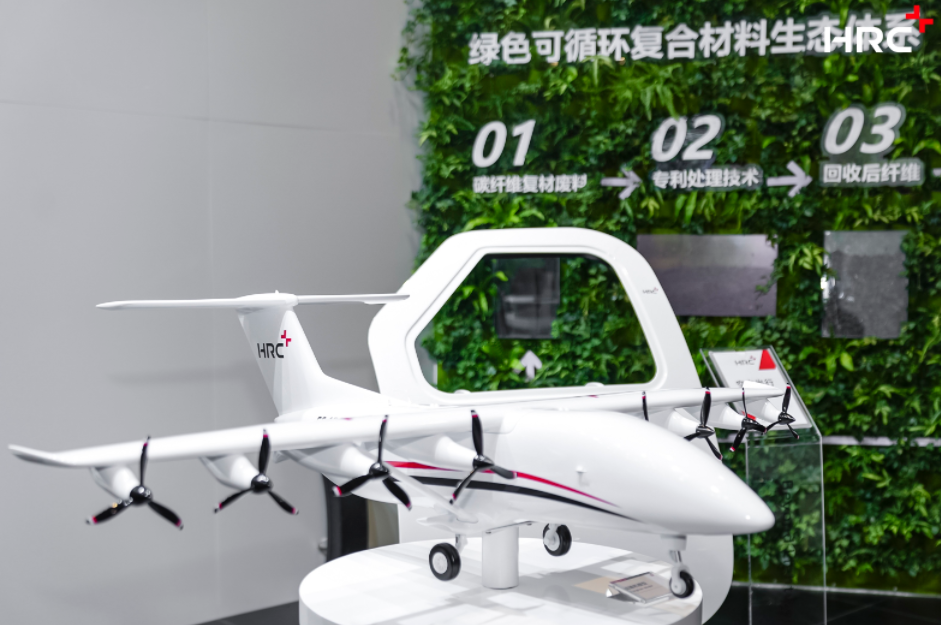
As a key partner, HRC collaborated with Yifei Aerospace Technology to showcase a 1:11 scale full carbon fiber model of the ES1000, accurately replicating the aircraft's industrial design. For this project, HRC was responsible for the manufacturing of T-tail components, section assembly, and primer coating. The vertical tail panel features co-cured skin and stringers, while the tail cone adopts a carbon fiber foam sandwich structure with integrated molding, achieving lighter weight and superior performance. This project highlights HRC’s exceptional capabilities in large-scale eVTOL component manufacturing and assembly.
Disruptive "Black Body" Redefines Application Limits
HRC has consistently leveraged its extensive project experience and technical expertise to help clients push the boundaries of application limits and lead industry trends. At this year's CIIE, HRC showcased the Yangwang U9, a million-yuan supercar with a striking red exterior and futuristic design that captivated attendees. The Yangwang U9 is China's first mass-produced vehicle to use carbon fiber as a structural component, with over 110 kg of carbon fiber integrated into the body. The car incorporates advanced technologies such as the "Hybrid Monocoque", the new-generation CTB (Cell-to-Body) system, and a hybrid structure, achieving a torsional stiffness of 54,425 N·m/°. This ensures exceptional safety while enhancing driving performance.
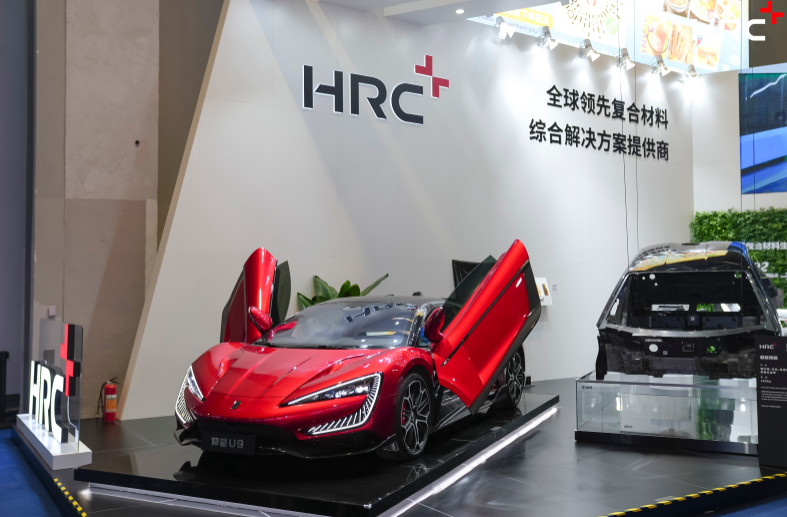
The "Hybrid Monocoque" is a core technology within the "Carbon Fiber Ultra-Safe Body Architecture" of the Yangwang U9, developed and exclusively manufactured by HRC. From carbon fiber material selection and structural design to prototyping and mass production, HRC's team was involved throughout the development process.
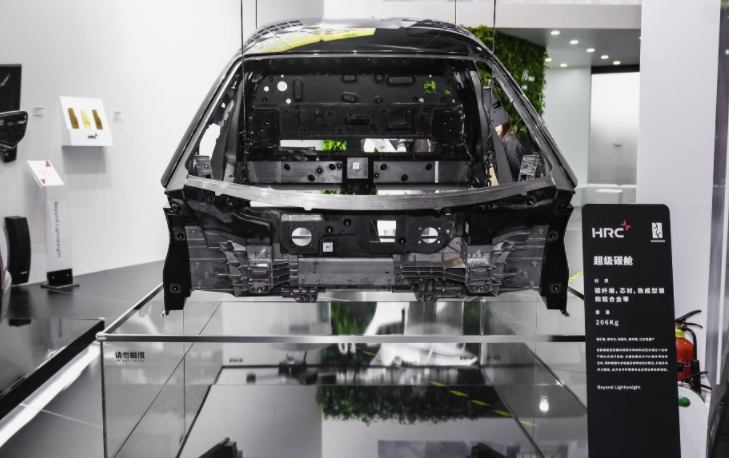
The "Super Carbon Cockpit" extensively utilizes T700 12K aerospace-grade carbon fiber, accounting for nearly 80% of the body volume. Compared to traditional steel-aluminum solutions, it achieves a 30% weight reduction, with a lightweight factor of just 0.95, setting a new industry benchmark. Additionally, the main load-bearing paths of the body combine carbon fiber with hot-formed steel, significantly improving the cabin's resistance to deformation and enhancing safety in roof crush and side-impact scenarios. HRC also employed over 10 connection technologies, including adhesive bonding, bolting, riveting, MIG and FDS (Flow Drill Screw), along with innovative PMI inserts in critical areas, significantly improving handling and safety under extreme conditions. At the HRC booth, the "Super Carbon Cockpit" was displayed in a unique suspended installation, complementing the Yangwang U9 to create a cohesive visual narrative that greatly impresses the visitors.
Patented Green Circular Composite Ecosystem: The New Life of Carbon Fiber
As sustainability becomes a global priority, HRC dedicated a special zone at this year's expo to its "Green Circular Composite Ecosystem", vividly illustrating the lifecycle of carbon fiber composites in an accessible way. As one of the few high-tech companies globally to establish a closed-loop system encompassing composite development, industrial application, and recycling, HRC utilizes patented recycling technology to transform carbon fiber waste into recycled carbon fiber intermediates. These materials are used to develop high-quality, cost-effective, and eco-friendly products for mobility, construction, consumer goods, and other industries.
The "Green Circular Composite Ecosystem" showcased at CIIE represents HRC's innovative solutions derived from exploring greenhouse gas reduction, cost efficiency, and material properties. This initiative provides a roadmap for the recycling and diversified reuse of composite materials. The concept and business model have garnered significant industry recognition. Earlier, HRC partnered with the Airbus Lifecycle Services Center (ALSC) to launch China's first aircraft disassembly and recycling project. Together, they aim to maximize the resource utilization of carbon fiber waste from retired aircraft, producing low-emission, high-performance recycled carbon fiber composites and derivative products. This collaboration brings the vision of a "Green Circular Composite Ecosystem" to life, contributing to the
development of a circular economy.
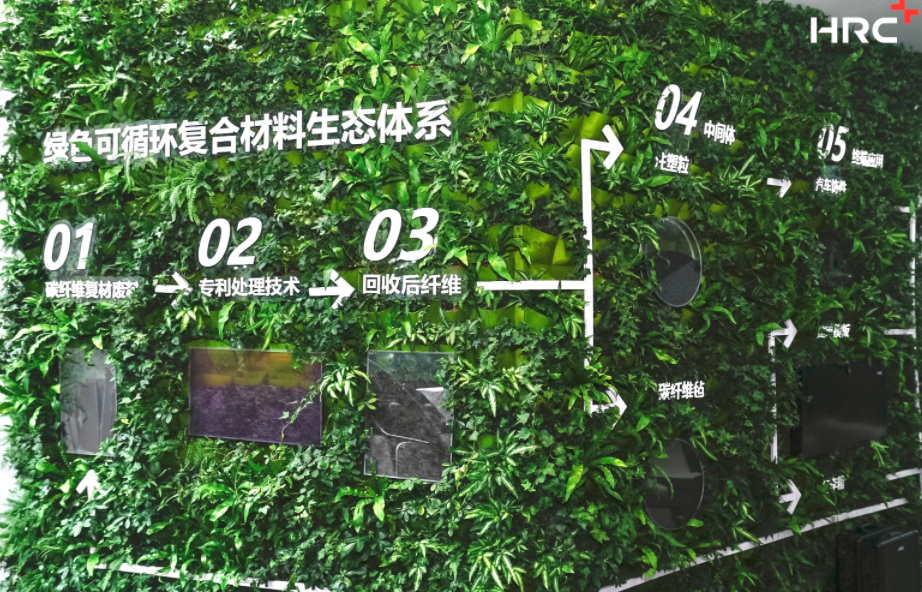
As a perfect platform for global open innovation of China market, CIIE continues to amplify its "spillover effect". Through five consecutive participations, HRC remains committed to fostering cross-industry partnerships, driving high-quality development in automotive and aerospace manufacturing, and advancing society toward a greener, smarter, and low-carbon future.







